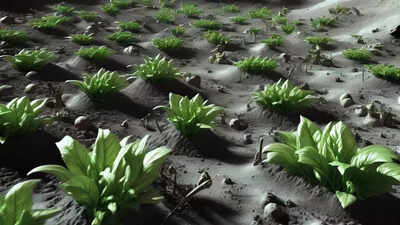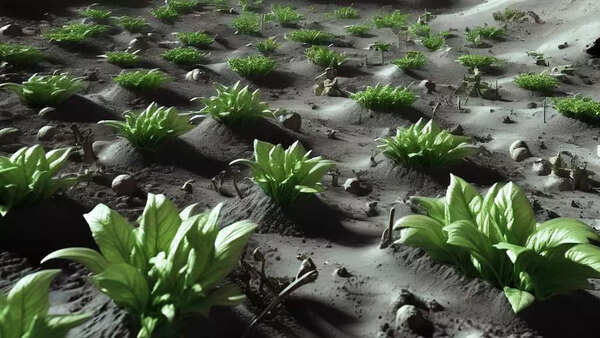Trending
NASA's Artemis III Mission to grow plants on the Moon
NASA's Artemis III mission marks a groundbreaking endeavor as it pioneers lunar farming, aiming to grow plants on the moon's surface for the first time in history. This historic initiative represents a significant leap forward in space exploration, advancing our understanding of sustainable living and potential colonization beyond Earth's bounds.

NASA's Artemis III mission, scheduled for 2026, is poised to make history with its pioneering lunar farming initiative, a key component of its objective to return humans to the moon's surface. The mission will see astronauts establishing growth chambers on the lunar terrain to cultivate various plant species, carefully selected for their adaptability to the lunar environment and their potential as sustainable food sources.
Among the chosen plants, duckweed stands out for its remarkable resilience and rapid growth rate.Not only does duckweed offer significant amounts of oxygen and protein, but its suitability for cultivation in space environments makes it a valuable candidate for sustaining future lunar missions. Similarly, thale cress has demonstrated its ability to thrive in the challenging conditions of moon soil, where water is scarce and nutrient deficiencies are prevalent. NASA also plans to introduce red and green varieties of brassica rapa, which, with their short life cycles, offer valuable insights into plant growth and adaptation in space environments.
To protect these plants from the harsh lunar conditions, they will be housed within specially designed chambers. These chambers will shield the plants from harmful radiation and maintain optimal growth conditions, ensuring the success of the cultivation experiment. The initiative, named LEAF (Lunar Effects on Agricultural Flora), aims to evaluate how plants respond to lunar conditions, including partial gravity and radiation exposure. Led by Christine Escobar of Space Lab Technologies, LLC, the project will also utilize remote cameras to monitor the germination process, providing valuable data for future lunar farming endeavors.
Following the conclusion of the Artemis III mission, the cultivated plants will be carefully transported back to Earth for detailed molecular-level analysis. This groundbreaking effort not only advances our understanding of sustainable living beyond Earth but also lays the foundation for potential future colonization efforts. The success of this mission could open doors to establishing self-sustaining habitats on the moon and beyond, marking a significant milestone in humanity's exploration of space.
Among the chosen plants, duckweed stands out for its remarkable resilience and rapid growth rate.Not only does duckweed offer significant amounts of oxygen and protein, but its suitability for cultivation in space environments makes it a valuable candidate for sustaining future lunar missions. Similarly, thale cress has demonstrated its ability to thrive in the challenging conditions of moon soil, where water is scarce and nutrient deficiencies are prevalent. NASA also plans to introduce red and green varieties of brassica rapa, which, with their short life cycles, offer valuable insights into plant growth and adaptation in space environments.
To protect these plants from the harsh lunar conditions, they will be housed within specially designed chambers. These chambers will shield the plants from harmful radiation and maintain optimal growth conditions, ensuring the success of the cultivation experiment. The initiative, named LEAF (Lunar Effects on Agricultural Flora), aims to evaluate how plants respond to lunar conditions, including partial gravity and radiation exposure. Led by Christine Escobar of Space Lab Technologies, LLC, the project will also utilize remote cameras to monitor the germination process, providing valuable data for future lunar farming endeavors.
Following the conclusion of the Artemis III mission, the cultivated plants will be carefully transported back to Earth for detailed molecular-level analysis. This groundbreaking effort not only advances our understanding of sustainable living beyond Earth but also lays the foundation for potential future colonization efforts. The success of this mission could open doors to establishing self-sustaining habitats on the moon and beyond, marking a significant milestone in humanity's exploration of space.

End of Article
FOLLOW US ON SOCIAL MEDIA









